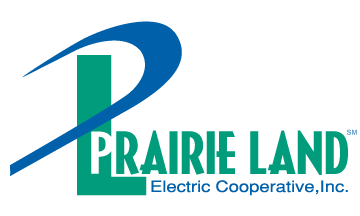From the June 2022 Kansas Country Living magazine centerspread
By Paul Wesslund
Whether the lights go out because of weather or squirrels, safety comes first for lineworkers.
The first thing you’ll notice is the deliberate, careful pace. They deploy signs to alert motorists. They mark the work area with orange cones. Always in hardhats and fire-protective clothing, anyone working on a power line pulls on heavy rubber gloves and spreads insulating blankets over the wires. Those gloves they pulled on have been tested by a machine that blows air into them to make sure there’s not even a pinhole that could allow a deadly electric current to pass through.
And there’s more you won’t see. That morning, they likely huddled at the back of a truck to discuss what each of them would be doing that day, with an emphasis on safety. It’s a best practice in the industry — so common it’s often called a “tailgate meeting” or “toolbox talk.”
Making Safety a Habit
There are a lot of reasons your electricity might go off, with weather by far the leading cause. But to a lineworker, all power outage repairs have one thing in common — safety.
Safety is common sense — people want to get home alive, after all. But it’s also drilled into the utility workers. In their pole-climbing contests, the fastest time will get disqualified with the slightest safety misstep.
Co-op leadership makes it clear that skipping any safety measure or procedure is a firing offense. Line crews attend lectures aimed at driving home the importance of safety protocols.
So, if you ever wonder why restoring electricity after an outage can take a while, there’s a good answer: line crews never compromise on safety.
The next thing you can learn from watching a line crew at work comes from seeing what task they’re doing. There’s a good chance they’re replacing old equipment. Poles and transformers wear out, and failing equipment is one significant cause of power outages. The crew you watch might be restoring an equipment outage, or they might be switching out an old device to prevent a future outage.
You might see them replacing a downed utility pole, a painstaking process of removing the old and hauling in and raising the new, using trucks specifically designed for the job.
Trees vs. Power Lines
The pole might be down because a motorist ran into it — another cause of outages. Or it could be weather related. Wind, ice, fires — these natural disasters cause about 80% of power outages. One characteristic of those natural disasters is that the damage can be widespread. If one pole is down, lots of others could be as well. That means crews will be repeating the pole-replacement process, one job at a time.
That’s why bringing the lights back on after a major storm with widespread outages can take days, or even weeks.
It’s also likely the crew you’re watching will be trimming trees. Trees are beautiful but a common cause of outages as wind and nearby branches can lead to wires getting knocked to the ground. Electric cooperatives devote a lot of time and resources to urging and enforcing limits on planting anything too close to power lines. And crews regularly set up to trim limbs that get too close to the wires.
One fairly common cause of outages you probably won’t learn about by watching a crew make repairs is wildlife. Squirrels and other critters routinely crawl around utility equipment, occasionally making a connection between high-voltage wires. Snakes that slither into an electric substation bring consequences — for them and the utility. Sometimes crews need to investigate and correct the cause. Often the system will reset itself after only a brief power interruption.
Lessons from the lineworkers? Outages can be caused by a variety of factors. Restoring power is an intricate process in a complex utility system. And safety — for crews and the community — will always be the top priority.
Paul Wesslund writes on consumer and cooperative affairs for the National Rural Electric Cooperative Association, the national trade association representing more than 900 local electric cooperatives. From growing suburbs to remote farming communities, electric co-ops serve as engines of economic development for 42 million Americans across 56% of the nation’s landscape.
